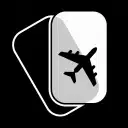How Runway Length Can Affect Your Charter Flight
As an air charter consumer, you may have experienced a time when your charter aircraft couldn’t land at a preferred airport because of the airport’s runway length. Considering the convenience and flexibility of private jet charter, this information could have come as somewhat of a surprise to you.
It’s important to understand that every private jet has certain runway length limitations referred to as takeoff and landing distances. These distances vary based on the size and weight of your aircraft. These requirements are set forth to enable jet aircraft to meet with the Federal Aviation Administration regulation that requires private jets to operate within 60 percent of a runway. This means that private jets have to takeoff from the first half of the runway in order to comply with FAA rules. Aircraft with heavy weight or poor climb rates have to either reduce cargo, fuel or passenger count or takeoff from a longer runway. Another runway length restriction concerns accelerate-stop distance. Under this rule, jet aircraft must be able to accelerate to their full takeoff speed, abort the flight mission and still have enough runway distance to come to a complete stop.
How do you know which aircraft will require more runway? Typically speaking, the larger your jet aircraft, the more runway distance it will need to safely takeoff and land. That’s why smaller aircraft can takeoff from shorter runways while heavy airliners need several thousands of feet to roll to a complete stop. The problem with runway length requirements is that they can significantly limit the number of aircraft or airports available to you for your charter flight. Charter flights to small airports with short runway are only accessible to lighter aircraft. Conversely, charter flights to large, international airports like LaGaurdia International can accommodate just about any size or type of aircraft because of its extremely long runways. However, there are larger aircraft like the Falcon 50 that can takeoff from shorter runways due to enhanced takeoff capabilities.
In addition to these runway length restrictions, private charter jets are restricted to using only the most “favorable” runway at every airport, as mandated by the FAA. This rule says that your private jet can’t land or takeoff from poorly-maintained runways with cracks or corrosion. These runways are typically found at small, uncontrolled or private airports or in remote locations where there isn’t a high demand for air travel.
To learn more about runway restrictions for your next charter flight, contact a Stratos Jet Charters agent. Our expert air charter consultants have the first-hand industry knowledge to arrange a charter flight on an aircraft that can meet the specific needs of your charter flight.
Are you ready to book your Los Angeles and Portland charter flight yet?
Our friendly, expert air charter agents are here to answer questions or start your quote today. Don`t wait, call now and we'll get you on your way to your destination!
Call 888-593-9066










